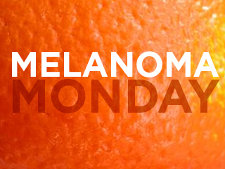Staff
 Melanoma Monday, the first Monday in May, recognizes a day for skin cancer awareness. Approximately 6,500 Canadians were diagnosed with melanoma in 2014.
Melanoma Monday, the first Monday in May, recognizes a day for skin cancer awareness. Approximately 6,500 Canadians were diagnosed with melanoma in 2014.
When found early, melanoma has one of the highest cure rates of all cancers at more than 90%. Unfortunately, the occurrence of melanoma in Canadians continues to grow; the lifetime risk of melanoma for men is now 1 in 74 and for women, it is 1 in 90.
In Grey Bruce, about 39 people a year are diagnosed with skin melanoma, and of those, 49% are male.
What is it and what does it look like?
Melanoma starts in the outer layer of the skin as these cells grow out of control and form a tumour. Melanoma can appear as a new mole, a freckle-like spot or develop in an existing mole. Melanomas are usually dark in colour – browns and blacks, although some show a mixture of colours. Commonly, melanoma in men is on the back and, in women, the leg. It can also appear on the arm, scalp or face.
The ABCDEs of melanoma can help to detect this disease.
Asymmetry – The shape on one side is different from that on the other side.
Border – The border or visible edge is irregular, ragged and imprecise.
Colour – Colour varies with brown, black, red, grey or white within the lesion.
Diameter – Growth is typical, it can measure more than 6 mm, although it can be less.
Evolution – Look for change in colour, size, shape or symptom, such as itching, tenderness or bleeding.
What causes it?
About 90% of melanomas are associated with severe UV exposure from the sun and tanning beds and sunburns.
Why should I check my skin?
More than half of melanomas are discovered by the person themselves; a further 17% by their family members.
What can I do to prevent melanoma?
– Limit your time in the sun, especially between 11 a.m. – 4 p.m. or when the UV Index is 3 or greater
– Stay in the shade
– Wear sun protective clothing (including long-sleeved shirts and pants and a wide-brimmed hat)
– Wear sunglasses (wrap-around, with UVA & UVB protection, or UV 400 protection)
– Apply sunscreen (UVA & UVB protection and SPF 30 or greater)
– Do not use indoor tanning equipment.
If you spot something…
See your family doctor or nurse practitioner, if you notice a change in an existing mole, freckle, or spot or if you find a new one with any of the warning signs.











